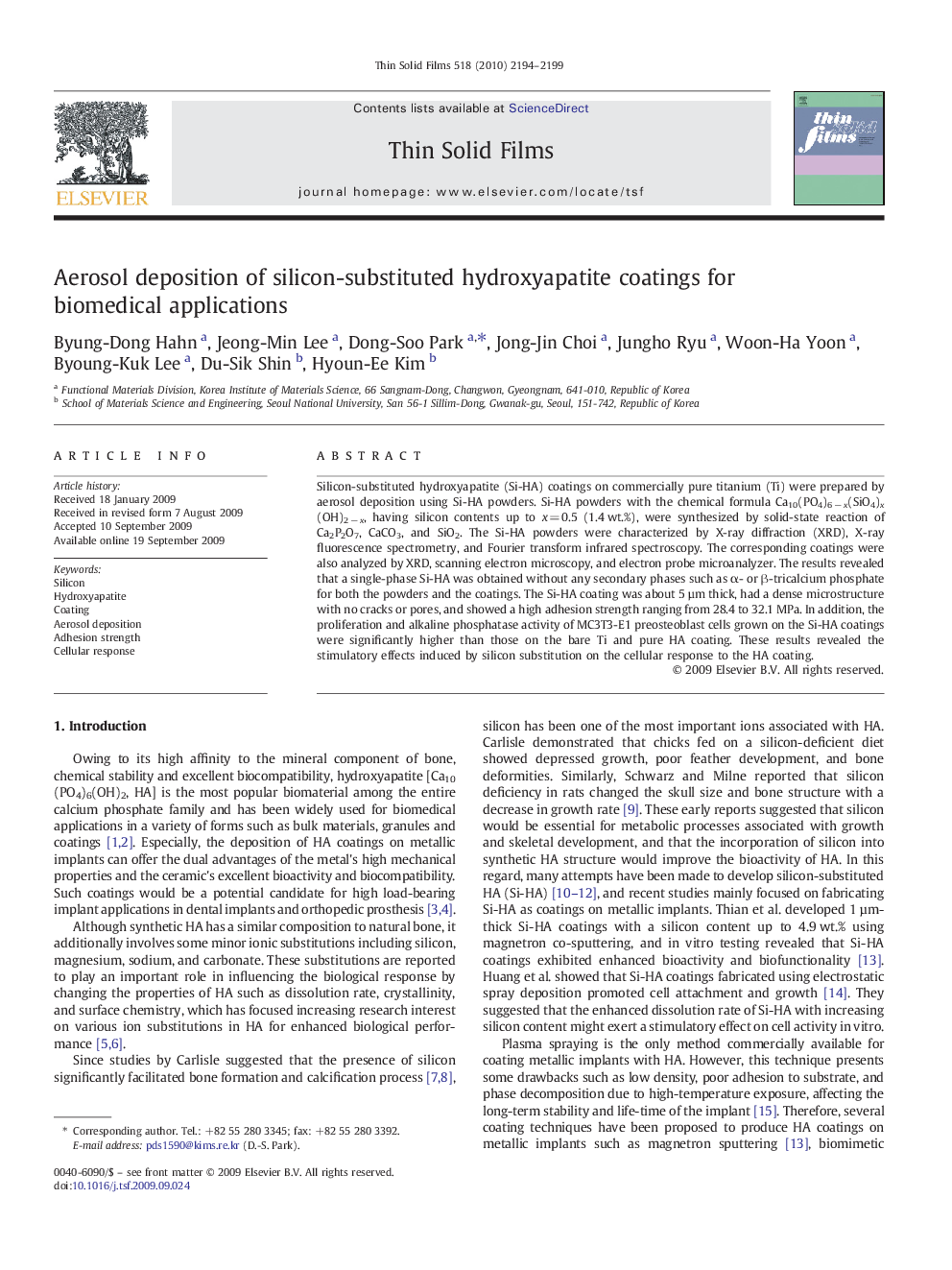| Article ID | Journal | Published Year | Pages | File Type |
|---|---|---|---|---|
| 1671812 | Thin Solid Films | 2010 | 6 Pages |
Abstract
Silicon-substituted hydroxyapatite (Si-HA) coatings on commercially pure titanium (Ti) were prepared by aerosol deposition using Si-HA powders. Si-HA powders with the chemical formula Ca10(PO4)6 â x(SiO4)x(OH)2 â x, having silicon contents up to x = 0.5 (1.4 wt.%), were synthesized by solid-state reaction of Ca2P2O7, CaCO3, and SiO2. The Si-HA powders were characterized by X-ray diffraction (XRD), X-ray fluorescence spectrometry, and Fourier transform infrared spectroscopy. The corresponding coatings were also analyzed by XRD, scanning electron microscopy, and electron probe microanalyzer. The results revealed that a single-phase Si-HA was obtained without any secondary phases such as α- or β-tricalcium phosphate for both the powders and the coatings. The Si-HA coating was about 5 µm thick, had a dense microstructure with no cracks or pores, and showed a high adhesion strength ranging from 28.4 to 32.1 MPa. In addition, the proliferation and alkaline phosphatase activity of MC3T3-E1 preosteoblast cells grown on the Si-HA coatings were significantly higher than those on the bare Ti and pure HA coating. These results revealed the stimulatory effects induced by silicon substitution on the cellular response to the HA coating.
Related Topics
Physical Sciences and Engineering
Materials Science
Nanotechnology
Authors
Byung-Dong Hahn, Jeong-Min Lee, Dong-Soo Park, Jong-Jin Choi, Jungho Ryu, Woon-Ha Yoon, Byoung-Kuk Lee, Du-Sik Shin, Hyoun-Ee Kim,
